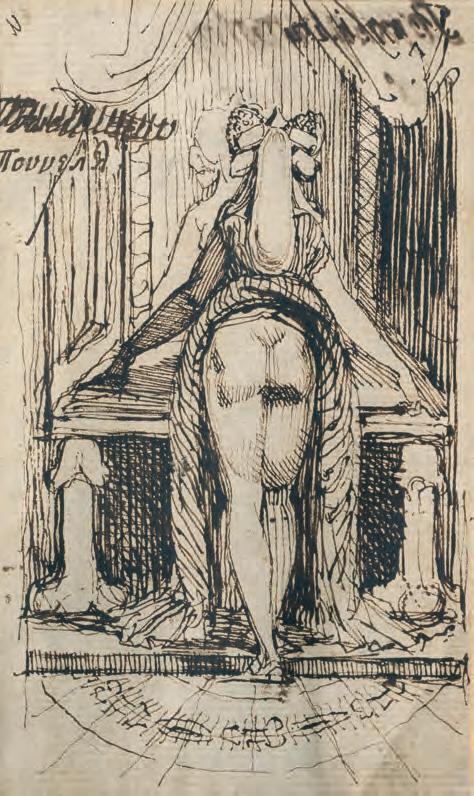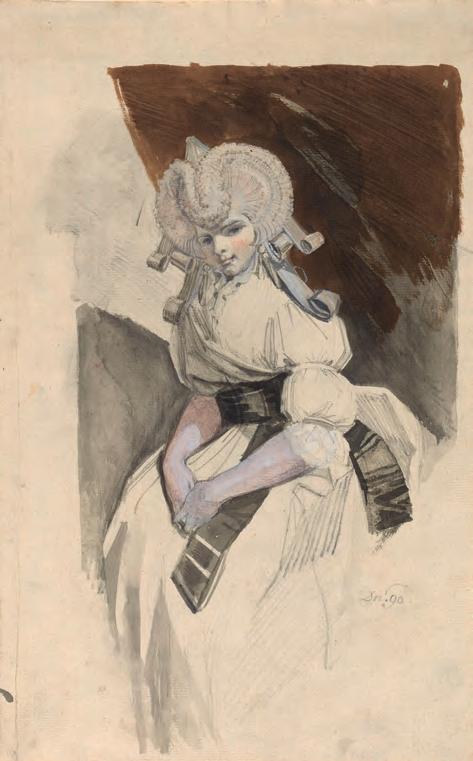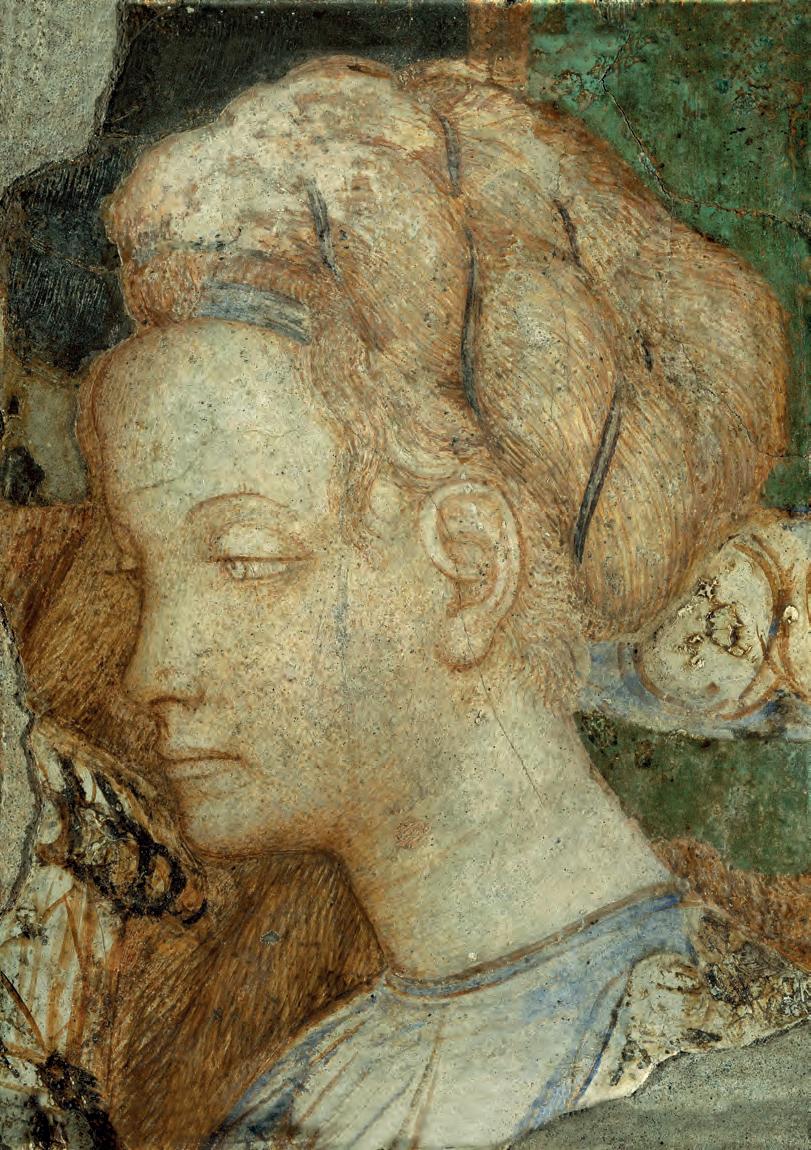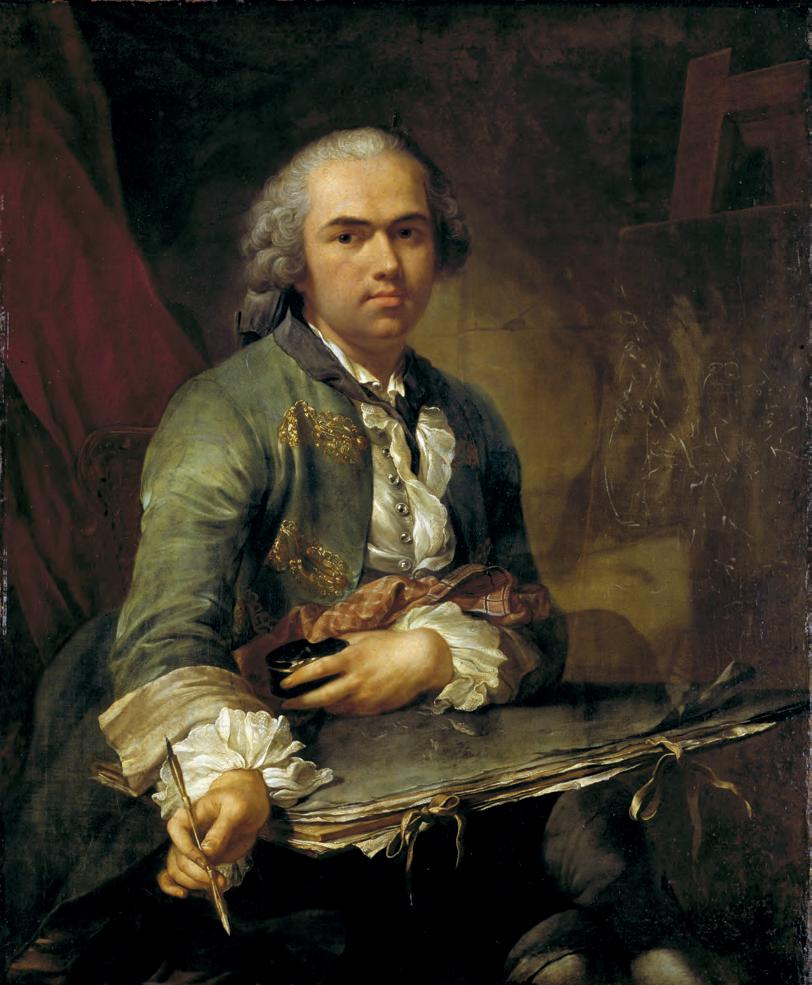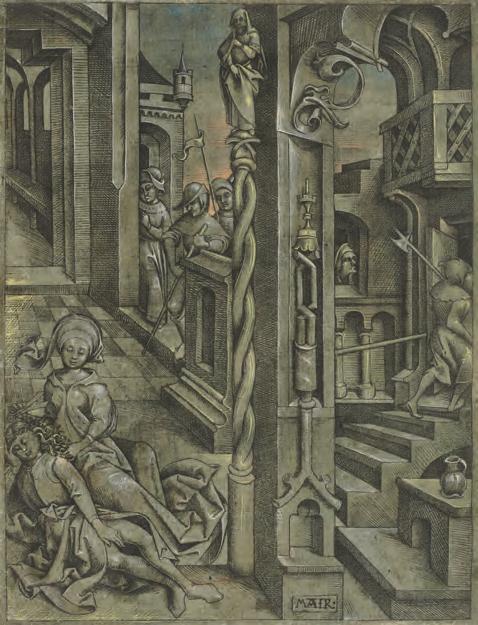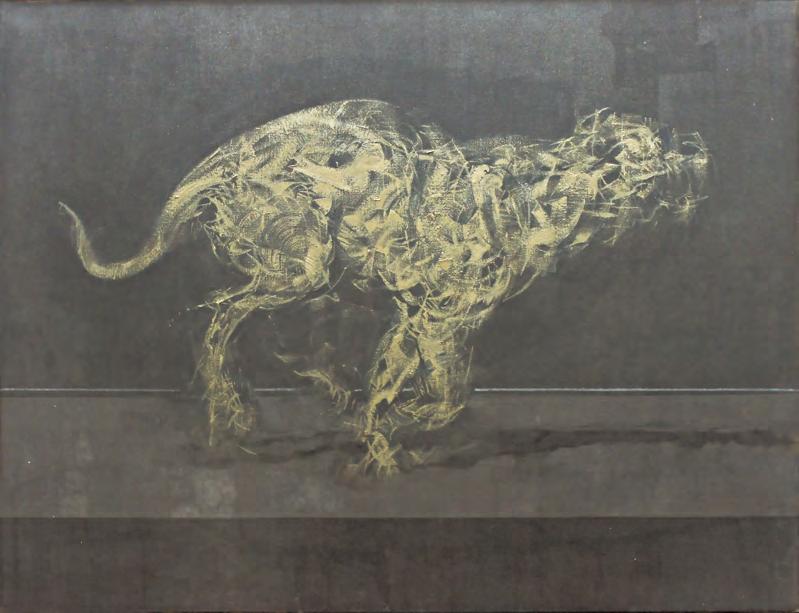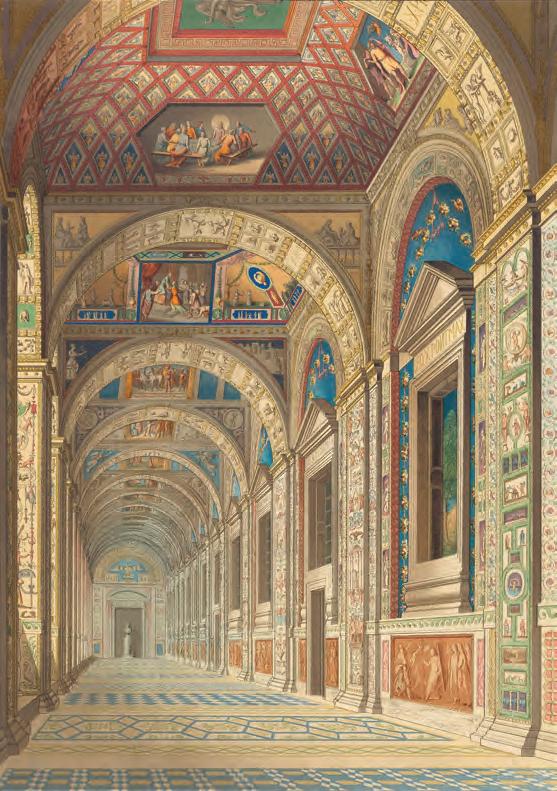
10 minute read
Denis Wirth-Miller: Landscapes and Beasts by katharina günther


Advertisement

4. Detail of Fig.1, showing the mark of Syracuse (an eagle in profile), the consul’s mark, NSC81, and the maker’s mark, DF. 5. Detail of Fig.1, showing the consul’s mark, NSC81, and the maker’s mark, DF. 6. Detail of Fig.1, the mark of Syracuse (an eagle in profile) and the consul’s mark, GACH82. 7. Detail of Fig.1, showing the consul’s mark, NSC81, and the maker’s mark, DF.38
were usually goldsmiths. Moreover, Nicola was a name consistently used by many generations of this family; for example, the silversmith Nicola Maria, documented in Messina in 1665.16 If the initial letter is read as ‘N’ the mark could therefore refer to one of his descendants. The second unpublished consular mark, GACH82, may well refer to a member of the Chindemi family, also originally from Messina but which also moved to Syracuse, where they were active for around two centuries from at least 1739.17 In the course of the eighteenth century, Syracuse experienced a lively cultural revival, which encouraged artists to move there in response to demand for their specialised skills.18 At least two members of the Chindemi family, Ascensio (Senzio) and Michele, worked on prestigious commissions alongside Decio Furnò, an outstanding silversmith of Messinese origin who was working in Syracuse during this period. 19
There is little doubt that Furnò was the maker of the ciborium. It bears in several places the maker’s mark formed of the initials DF (Fig.7), which is effectively his signature. The attribution is supported by comparison with securely documented works. Although his date of birth is unknown, Decio’s life seems to have spanned almost the entire eighteenth century since he is documented as working in Messina, Palermo and Syracuse between 1726 and 1792, which was probably the year he died.20 It was most likely an outbreak in 1743 of the plague in Messina and Reggio Calabria that forced him to leave his native city for Syracuse, where he gradually became one of the city’s principal silversmiths. He is usually associated with the repair and restoration of liturgical silver, his most celebrated commission of this type being his work, together with Ascensio Chindemi, in 1763 on the silver reliquary casket of St Lucy for Syracuse Cathedral. He was also, however, a prolific maker who undertook a number of prestigious commissions for the cathedral.21 Among them were the great cross for the high altar in 1763 and a pair of portable candelabra made in 1768,22 both designed by the Syracuse painter Mauro Troia, with whom Furnò worked regularly. He also made for the cathedral two monstrances, in 1771 and 1776 respectively; the steps of the high altar made between 1765 and 1781 (which feature the same marks as the Mdina ciborium), also designed by Troia, in which appear ornamental forms that recall Messinese barocchetto, forms that are seen in Syracuse only during the final quarter of the eighteenth century following the earthquake that
16 G. Chillè: ‘Nicola Maria Scardamaglia (Scaramaglia)’, in Di Natale, op. cit. (note 2), II, p.557. 17 G. Agnello: ‘Orafi e argentieri dei secoli XVI, XVII e XVIII’, Archivi: archivi d’Italia e rassegna internazionale degli archivi XXIII, fasc.2–3 (1956), pp.265–94, at pp.271–76. See also D. Ruffino: ‘Ascensio (Senzio) Chindemi’, ‘Michele Chindemi’, ‘Placido Chindemi’, and ‘Vincenzo Chindemi’, in Di Natale, op. cit. (note 2), I, pp.130–31. 18 See Agnello, op. cit. (note 17), pp.265–94; and idem: ‘Ricerche archivistiche per la storia dell’arte: oafi e argentieri dei secoli XVI, XVII e XVIII II’, Archivi: archivi d’Italia e rassegna internazionale degli archivi XXIII, fasc.4 (1956), pp. 343–61. 19 Agnello, op. cit. (note 17), pp.274–75. 20 L. Bertolino: ‘Indice degli orafi e argentieri di Palermo’, in M.C. Di Natale, ed.: exh. cat. Ori e argenti di Sicilia dal quattrocento al settecento, Palermo (Albergo dei Poveri) 2000–01, p.401; G. La Licata: ‘Indice degli orafi e argentieri di Messina’, in ibid., p.407; and D. Ruffino: ‘Indice degli orafi e argentieri di Siracusa’, in ibid., p.412. 21 Agnello, op. cit. (note 17); and idem, op. cit. (note 18), pp.343–47. See also S. Lanuzza: ‘Il Rococò nelle argenterie della Sicilia sud orientale’, in Grasso
struck Reggio and Messina in 1783; and two decorative elements that frame the high altar frontal made in 1752 by Angelo Maria Spinazzi, a silversmith from Piacenza working in Rome.23 Furnò’s last work for the high altar of the cathedral was begun in 1792 and was completed by the silversmith Giuseppe Luca.24
However, the work by Furnò that is technically, compositionally and stylistically closest to the Mdina ciborium was not made for Syracuse. This is a small ciborium that incorporates a small throne for the exposition of the Host (Fig.9), which Furnò completed in 1773 for the church of the Carmelite monastery of S. Marco, Enna, for a total cost in silver of 309 ounces, 27 tares and 2 grains, of which 50 ounces were the silversmith’s payment.25 Both ciboria are highly ornamented, especially in the central doors, with an exuberant mingling of materials and colours. The documentation related to the creation of the Enna ciborium assists an understanding of how the Mdina example would have been made, which is especially valuable given the absence of such documentation for that ciborium. It seems clear that both objects were the work of a number of hands; Furnò would have collaborated as necessary with a range of specialists, including wax modellers, gilders and workers in wood and textiles. The visual and haptic contrast between the silver and the crimson velvet, the colour of choice for solemn furnishings, was extremely popular at this time, as it created optical effects that evoked the great ephemeral machines of Baroque festivities, performances and other spectacles. Similar effects can be found in seventeenth- and eighteenth-century altar doors, altar frontals, the bindings of liturgical books and other liturgical objects manufactured in both Sicily and Malta.

and Gulisano, op. cit. (note 9), pp.123–35, at p.130; S. Terzo: ‘Decio (Desio, Desiderius) Furnò (Forno)’, in Di Natale, op. cit. (note 2), I, p.263. 22 For these works, see M. Russo, ed.: ‘Le suppellettili ecclesiastiche’, in exh. cat. Pro mundi vita: Eucaristia e arte nel Duomo di Siracusa, Siracusa (Cappella Sveva dell’Arcivescovado di Siracusa) 2000, pp.86 and 92–93. 23 E. Mauceri: ‘Documenti artistici siracusani’, Archivio storico per la Sicilia Orientale V, fasc.1 (1908), pp.80–85; G. Agnello and S.L. Agnello: Siracusa barocca, Caltanissetta and Rome 1961, pp.27–29. 24 For Giuseppe Luca, see D. Ruffino: ‘Giuseppe Luca’, in Di Natale, op. cit. (note 2), II, p.384. 25 R. Lombardo: La Chiesa e il Monastero di San Marco le Vergini di Enna tra storia, arte e devozione, Enna 1999, pp.135–39; P. Russo: ‘Nuovi documenti riguardanti alcuni argenti inediti, noti o poco noti, del settecento Siciliano’, in S. Rizzo, ed: exh. cat. Il tesoro dell’isola: Capolavori siciliani in argento e corallo dal XV al XVIII secolo, Prague (Wallenstein Riding School) 2004, pp.1,083–90, at. pp.1084 and 1,088–89, doc.5. At the time of publication the ciborium is temporarily housed in the Prefecture of Enna. 8. Detail of Fig.1, showing the interior of the ciborium and the later taffeta lining. 9. Ciborium and throne, by Decio Furnò. 1772–73. Silver, gilded silver, copper and velvet, height 175 by 100 by 55 cm. (S. Marco, Enna; photograph Rocco Lombardo).


All of these objects are made of sheet silver that has been embossed, chased, cut out to form openwork and engraved before being fixed with silver pins onto a velvet surface stretched over a wooden carcass.26 The interior of the carcass of the Mdina ciborium is lined with a textile dating from the late eighteenth or early nineteenth centuries in poor condition (Fig.8). In the Louis XVI style, and probably originally made for a secular purpose, it is a taffeta in woven brocade à liage repris.27 It is likely that that the ciborium was originally lined with velvet, in order to maintain the decorum of the object during its use, which involved the cover being lifted. Furnò probably designed the Enna ciborium himself, as he does not mention design drawings in the list of expenses he drew up in connection with its making, in which the other craftsmen involved in its manufacture are accurately noted.28 Although the precise circumstances of its commission remain unknown, it is very probable that Furnò also designed the ciborium in Malta. In fact, this seems to have been common practice, as in the case of the lost silver and crimson velvet ciborium commissioned by the priest Don Antonio Landolina, Procurator General for the high altar of the Carmelite monastery church of S. Teresa in Syracuse. Here the silversmith Vincenzo Chindemi also designed the entire object, with the exception of the two lateral putti, the models for which had been sent to him by an unnamed architect in Noto.29
Both these ciboria by Furnò are based on a model that developed in the post-Tridentine period, with four feet forming a plinth supporting an urn in polygonal form, the cover of which may be raised to allow the chalice containing the Host to be placed inside; once this is done, the ciborium is locked with a key and then exposed to worshippers.30 The cover of the Mdina ciborium, which shares the same polygonal form as the main body, is crowned with a finely modelled and chased Agnus Dei seated upon a book, from which are suspended straps bearing the first six of the seven Seals of Revelation that prefigure the second coming of Christ.
The Mdina ciborium is first documented in an inventory of the cathedral drawn up in 1815, in which it is recorded that it was then in use on the high altar.31 The ciborium usually present in the cathedral was made in 1752 by the masters Giovanni Andrea Troisi (brother of Pietro Paolo) and Annetto Pullicino, so completing the commission for a small throne for the
10. Detail of Fig.1, showing the cartouche with the coat of arms of the Arezzo family.
26 See G. Travagliato: ‘Paliotto’, in M.C. Di Natale, ed.: exh. cat. Splendori di Sicilia: arti decorative dal Rinascimento al Barocco, Palermo (Albergo dei Poveri) 2001, pp.456–59, no.148; R. Vadalà: ‘Paliotto’, in idem, pp.456–59, no.149; and J. Farrugia: Antique Maltese Ecclesiastical Silver, Malta 2001, I. 27 The author thanks Maurizio Vitella for this information. 28 Russo, op. cit. (note 25), pp.1,088–89, doc.5. 29 Agnello, op. cit. (note 17), pp.272 and 286. 30 See G. Moroni: Dizionario di erudizione storico-ecclesiastica, Venice 1853, LXIV, pp.87–90. For the Maltese context, see Farrugia, op. cit. (note 26), pp.52–56. 31 Cathedral Archives, Mdina, Misc.218, inventory 1815, fols.31–32: ‘un grande Tosello, si dice Girandola, che si colloca nell’altar Maggiore per l’esposizione del S[antis]s[i]mo Sagramento, tutto a piancia d’argento collocato sopra il velluto cremesi, con fogliami anche d’argento, e puttini’ . See also Cathedral Archives, Mdina, Misc.220, Inventario generale degl’Ori, Argenti, Gioie, Reliquie, e Supellettili appartenenti alla S. Arcivescovile Chiesa Cattedrale di Malta 1853, fol.23, in which it is recorded as a ‘Tosello grande, d[etto] Girandola, qual collocasi nell’Altar Maggiore, nell’Esposizione del S[antis]S[i]mo Sacramento tutto a pianca d’Argento, sopra Velluto cremesi, con foliami, a puttini d’Argento, de quali manca un piccolissimo pezzo in un fiocco destro’. 32 Farrugia, op. cit. (note 26), pp.53–54; J.A. Briffa: Pietro Paolo Troisi (1686–1750): A Maltese Baroque Artist, Malta 2009, pp.33–37; M. Sagona: ‘Ornamental and decorative drawings for Malta 1600–1900: problems, reflections and insights’, in S. de Cavi, ed.: Dibujo y ornamento: trazas y dibujos de artes decorativas entre Portugal, España, Italia, Malta y Grecia. Estudios en honor de Fuensanta García de la Torre, Cordova and Rome 2015, pp.469–89, at p.476. 33 R. Grana Scolari: Cenni storici sulla città di Modica, Modica 1895, pp.399–400. 34 A. Ferris: Memorie dell’inclito Ordine gerosolimitano esistenti nelle isole di Malta, Malta 1881, p.304; D. Munro: Memento Mori: A Companion to the Most Beautiful Floor in the World, Malta 2005, p.50. It is now possible to

